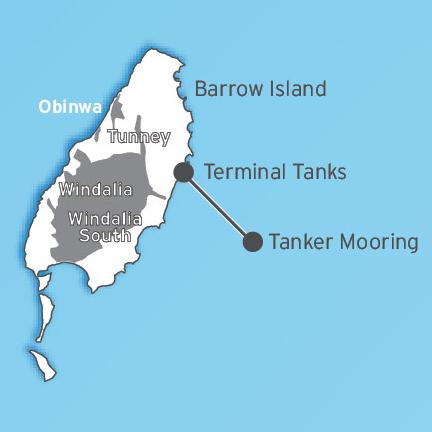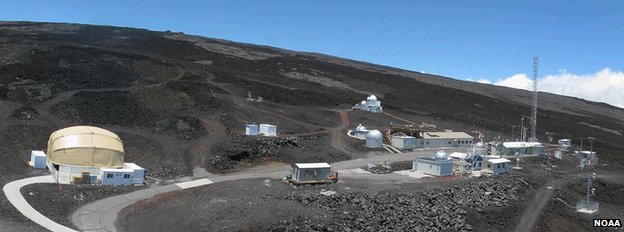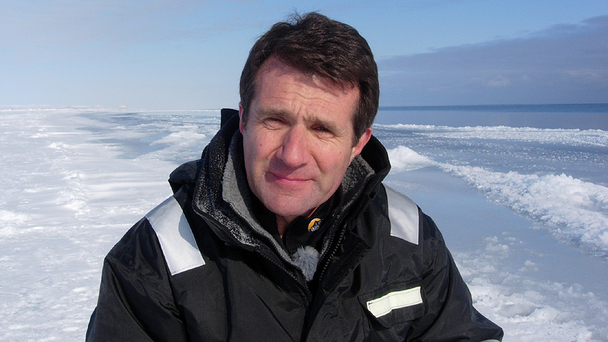Day three of recognising the passing of 400 ppm atmospheric CO2.
In nearly four years of writing for Learning from Dogs, I can’t recall devoting three days of posts to a single subject. To put that into context, today’s post is number 1,683 since the first one was published on July 15th, 2009; not all of them from the brain of yours truly by any means you understand!
Today, I’m going to feature a recent essay written by George Monbiot finishing up three days of ‘reporting’ on the deeply disturbing, but fully anticipated, news that the planet’s atmosphere has reached a concentration of 400 ppm CO2.
Last Monday, I published What legacy do we wish to leave for others?
Then yesterday, a post under the title of 400 ppm, as the BBC reported it. I closed with a reference to a remark made by Professor Sir Brian Hoskins, director of the Grantham Institute for Climate Change at Imperial College London; the remark being “A greater sense of urgency was needed.“
I wrote that those wishy-washy words were pathetic. That we needed the sort of words that George Monbiot penned a few days ago in the Guardian newspaper. There it was entitled “Climate milestone is a moment of symbolic significance on road of idiocy“.
But I think the title that Mr. Monbiot chose to use on his own blog was far more apt: Via Dolorosa. (Note that I haven’t formally requested permission to republish the essay but trust that the following is acceptable to both Mr. Monbiot and the Guardian newspaper.)
Here’s how it opened:
Via Dolorosa
May 10, 2013
Corruption and short-termism are pushing us along the path of sorrows.
By George Monbiot, published on the Guardian’s website, 10th May 2013
The records go back 800,000 years: that’s the age of the oldest fossil air bubbles extracted from Dome C, an ice-bound summit in the high Antarctic. And throughout that time there has been nothing like this. At no point in the pre-industrial record have concentrations of carbon dioxide in the air risen above 300 parts per million. 400 is a figure that belongs to a different era.
The difference between 399 and 400ppm is small, in terms of its impacts on the world’s living systems. But this is a moment of symbolic significance, a station on the Via Dolorosa of environmental destruction. It is symbolic of our collective failure to put the long term prospects of the natural world and the people it supports above immediate self-interest.
The symbolic significance of the planet’s atmospheric concentrations of CO2 passing 400ppm is that, I hope, with all the hope that my heart can summon up, it will bring us back from the brink. Then one ponders about this possibility as Monbiot’s next paragraph unfolds:
The only way forward now is back: to retrace our steps along this road and to seek to return atmospheric concentrations to around 350 parts per million, as the 350.org campaign demands. That requires, above all, that we leave the majority of the fossil fuels which have already been identified in the ground. There is not a government or an energy company which has yet agreed to do so.
“not a government or an energy company … has yet agreed to do so.”
I’m going to repeat that again, with emboldening; “not a government or an energy company … has yet agreed to do so.”
In fact, one could reasonable argue that having any hope for a turning back is utterly naive. Look what the essay goes on to say:
Just before the 400-mark was reached, Shell announced that it will go ahead with its plans to drill deeper than any offshore oil operation has gone before: almost three kilometres below the Gulf of Mexico.
A few hours later, Oxford University opened a new laboratory in its department of earth sciences. The lab is funded by Shell. Oxford says that the partnership “is designed to support more effective development of natural resources to meet fast-growing global demand for energy.” Which translates as finding and extracting even more fossil fuel.
The European Emissions Trading Scheme, which was supposed to have capped our consumption, is now, for practical purposes, dead. International climate talks have stalled; governments such as ours now seem quietly to be unpicking their domestic commitments. Practical measures to prevent the growth of global emissions are, by comparison to the scale of the challenge, almost non-existent.
As an example of the scale of the hypocrisy in which we are all immersed, last week’s The Economist magazine carried a full-age advertisement from Chevron on page 5 under the banner of ‘Protecting The Planet Is Everyone’s Job – We agree‘ and going on to explain:
We go to extraordinary lengths to protect the integrity of the places where we operate. Places all over the world, like Australia’s Barrow Island. It’s home to hundreds of native species of wildlife, including wallabies, ospreys, and perenties.
We’ve been producing energy on the island for more than 40 years, and it remains a Class A Nature Reserve.
Didn’t take me two moments to find this image:

To my mind this advertisement completely misses the point; deliberately or otherwise. Chevron and all other oil producing companies in the world are endangering the future of the entire planet by continuing to ‘produce energy’, aka oil. Period. Full stop.
Or to put it in the words of George Monbiot’s essay:
The problem is simply stated: the power of the fossil fuel companies is too great. Among those who seek and obtain high office are people characterised by a complete absence of empathy or scruples, who will take money or instructions from any corporation or billionaire who offers them, and then defend those interests against the current and future prospects of humanity. This new mark reflects a profound failure of politics, worldwide, in which democracy has quietly been supplanted by plutocracy. Without a widespread reform of campaign finance, lobbying and influence-peddling and the systematic corruption they promote, our chances of preventing climate breakdown are close to zero.
Thus the final sentence in GM’s essay carries a deep sadness.
So here we stand at a waystation along the road of idiocy, apparently determined only to complete our journey.
Why are we not seeing, hearing and reading words of a similar weight and power from just about every ‘opinion maker’ in the world?


